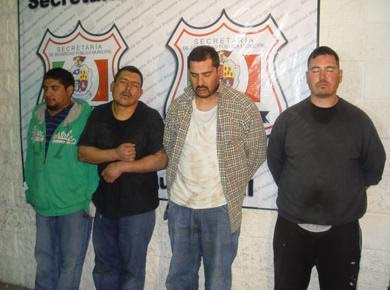by Chivis for Borderland Beat
The Knights Templar cartel is based in Lazaro Cardenas, however Los Zetas and Sinaloa cartels are the most active drug cartels in Central America, and reportedly Sinaloa has moved meth production into Guatemala on an industrial scale.
"When controls over precursors were strengthened in the United States, manufacture shifted to Mexico, as Mexico has responded with strong counter-methamphetamine initiatives, manufacturing activities are increasingly reported from countries in Central and South America."
Carlos Menocal the Interior Minister of Guatemala stated to the associated press that the Sinaloa Cartel has establish operations in Guatemala by forming an alliance with a gang led by Juan Alberto Ortiz Lopez, who goes by the moniker “Chamale”. Who was arrested in March but was considered the most important trafficker in Guatemala by the United States.
"An analysis by Guatemala's intelligence indicates the laboratories were managed by Mexicans," Menocal said. "They come to oversee the drug production process; Mexican chemists came to establish the formulas and local people talk about Mexicans who came and went, doing this work."
Guatemala, a poor, ill resourced country will be incapable to be a challenge to powerful cartels such as Sinaloa and Los Zetas. Zetas are said to control 75% of the country with regions literally abandoned by the government. It would appear that the only impediments they would encounter are those from each other.
It is evident that meth production has moved south. South of Mexico that is, to Guatemala. This week, in the pacific coast port of
Lazaro Cardenas, Mexican authorities made a seizure of 120 metric tons of a
precursor chemical needed to manufacture meth.
It was destined to Puerto Quetzal, Guatemala.
This brings the total to 675 tons of precursor seized in
December alone, and every bit of it was being transported to Guatemala. For their part authorities in Guatemala have seized
7900 barrels of precursors in the year of 2011.
That amounts to 1600 tons, out confiscating Mexico's 1200 for the same time
frame. 1600 tons is four times the
amount seized in 2010.
The five shipments seized in December originated in China
then drop shipped in Mexico but headed for Guatemala for production. The Lazaro Cardenas Port is known to be used by
the Sinaloa Cartel.
The Knights Templar cartel is based in Lazaro Cardenas, however Los Zetas and Sinaloa cartels are the most active drug cartels in Central America, and reportedly Sinaloa has moved meth production into Guatemala on an industrial scale.
Typically when the ability of production is compromised
there is a logistic shift. According to the
UN Drug and Crime 2011 Report:
"When controls over precursors were strengthened in the United States, manufacture shifted to Mexico, as Mexico has responded with strong counter-methamphetamine initiatives, manufacturing activities are increasingly reported from countries in Central and South America."
Carlos Menocal the Interior Minister of Guatemala stated to the associated press that the Sinaloa Cartel has establish operations in Guatemala by forming an alliance with a gang led by Juan Alberto Ortiz Lopez, who goes by the moniker “Chamale”. Who was arrested in March but was considered the most important trafficker in Guatemala by the United States.
"What we have found is that Chamale has links to the
Sinaloa cartel," Menocal said, “ Those links include coordinating the
processing or "cooking" of meth”.
"An analysis by Guatemala's intelligence indicates the laboratories were managed by Mexicans," Menocal said. "They come to oversee the drug production process; Mexican chemists came to establish the formulas and local people talk about Mexicans who came and went, doing this work."
Guatemala, a poor, ill resourced country will be incapable to be a challenge to powerful cartels such as Sinaloa and Los Zetas. Zetas are said to control 75% of the country with regions literally abandoned by the government. It would appear that the only impediments they would encounter are those from each other.




































